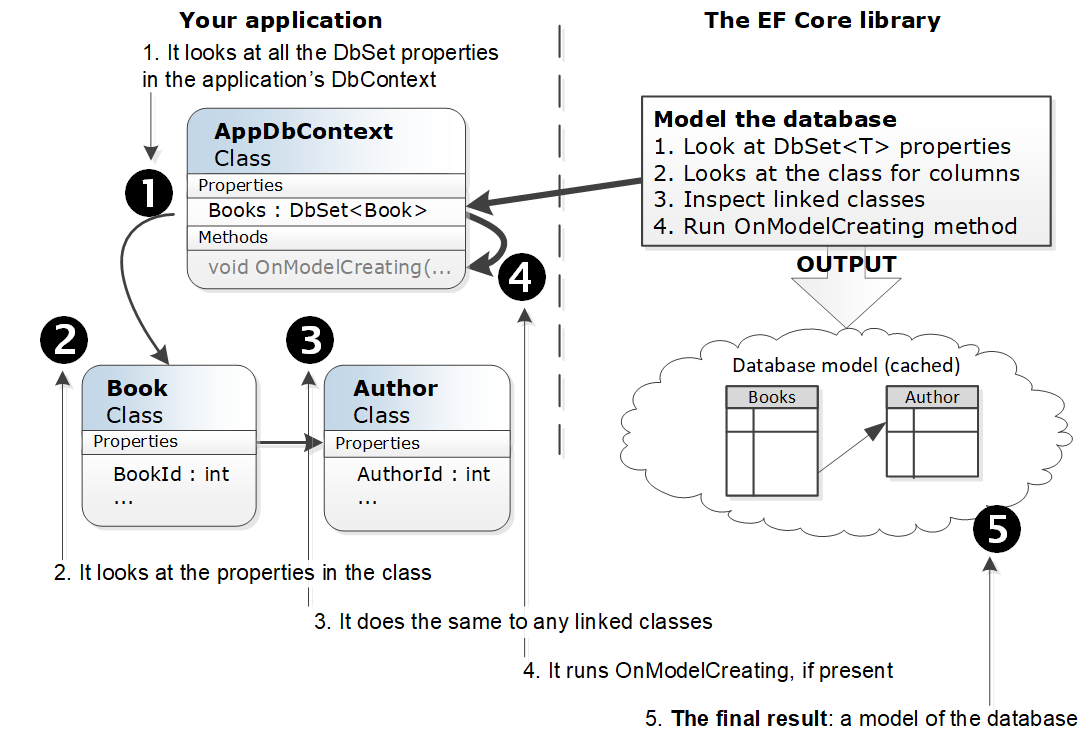.NET developers often used to write ADO.NET code to save or retrieve application data from the underlying database by using the following steps:
- Open a connection to the database,
- Create a DataSet to fetch or submit the data to the database, and
- Convert data from the DataSet to .NET objects or vice-versa to apply business rules.
EF Core is the successor to EF, but it is a complete rewrite and is not backwards compatible with previous versions of EF.
The figure shows the process that EF Core goes through the first time you use your application’s DbContext.
|

|
The following prerequisites are required for an EF Core project:
- .NET Core SDK (Software Development Kit), which is a comprehensive set of libraries and tools that developers use to create, build, and run .NET applications and libraries,
- Visual Studio, which is the Microsoft’s flagship software or Integrated Development Environment (IDE),
- SQL Server, which is a relational DBMS from Microsoft, and
- Entity Framework Core, which could be downloaded via the option “NuGet Package Manager” of Visual Studio.
|
“Why do they call it rush hour when nothing moves?” — Robin Williams |